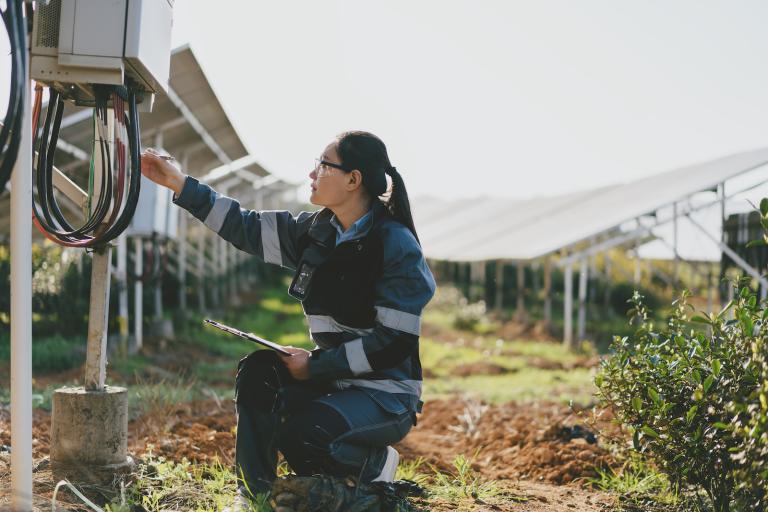The Biden administration issued a draft plan on Friday to expand oil and gas drilling in the Gulf of Mexico and Alaska. The proposal from the Department of the Interior recommends holding up to 10 lease sales in the Gulf over the next five years, as well as one sale in the Cook Inlet off the coast of south-central Alaska.
It’s a significantly smaller program than the one put forward by the Trump administration, which had proposed 47 lease sales over the same time period but was never finalized. In a press release, the agency stressed that the plan was still subject to feedback from the public and that a plan with “no lease sales” was still on the table. Secretary of Interior Deb Haaland welcomed any critique.
“Today, we put forward an opportunity for the American people to consider and provide input on the future of offshore oil and gas leasing,” she said in a statement. “The time for the public to weigh in on our future is now.”
Under a 1953 law called the Outer Continental Shelf Lands Act, the federal government must plan for offshore oil and gas leasing on a five-year basis. The previous plan was finalized under President Barack Obama in 2016, went into effect in 2017, and expired yesterday.
Though President Joe Biden campaigned on a promise to end oil and gas leasing on public lands and waters, he reversed course on that position after entering office. In November, just days after the administration talked up U.S. climate leadership at a United Nations climate conference, Biden auctioned off leases on more than 80 million acres in the Gulf of Mexico, the largest sale in the region’s history. The administration argued it was compelled to hold the sale by law, but the whole event was later invalidated by a federal judge who found that it was based on a faulty analysis of potential greenhouse gas emissions.
There are different theories of change for how to rein in emissions and stave off worse climate disasters than the ones the world has already experienced. Some argue that demand-side policies that promote alternatives to fossil fuels can get the job done, for instance by incentivizing the use of clean technologies like wind, solar, and electric cars. Thus far, the Biden administration has adhered pretty strictly to that path, though with minimal progress. Biden’s suite of policies to boost clean energy has been tied up in the Senate for months. Yesterday, the Supreme Court ruled that the Environmental Protection Agency couldn’t force power producers to shift to renewable energy without explicit direction from Congress, constraining Biden’s ability to promote clean power.
But many climate experts argue that it will be impossible to get off oil and gas without simultaneously winding down the supply of these fuels by phasing out production.
“If the administration chooses a plan that expands leasing, it will deepen our dependence on the fuels driving the climate crisis and padding the war chests of belligerent petro states,” said Manish Bapna, president and CEO of the Natural Resources Defense Council, in a statement. “And it won’t do a thing to ease summer pump prices.”
Carbon emissions aren’t the only consideration the administration will take into account as it moves to finalize the plan. An expansion of leasing would be a major blow to communities along the Gulf Coast that have experienced the health and environmental burdens of the oil and gas industry for decades. In addition to the risk of oil spills and other threats to marine ecosystems, offshore drilling could lead to increased refining, petrochemical production, and other polluting activities onshore that directly harm human health. Alaskans in Lower Cook Inlet are also worried about impacts on fishing, tourism, and food security.
There’s some precedent for shrinking the leasing program, or even ending it altogether. In 2016, the Department of the Interior under Obama made portions of the Arctic Ocean under U.S. jurisdiction off limits to future oil and gas leasing. The government explicitly pointed to international climate goals in a fact sheet about the decision, noting that “the scientific realities of climate change dictate that the United States and the international community must be transitioning its energy systems away from fossil fuels.”
“That’s as true now as it was in 2016,” said Peter Erickson, climate policy director at the Stockholm Environment Institute, a research organization. “And essentially, what that says is, look, if we’re taking these climate goals seriously that we committed to in the Paris Agreement, we don’t need more oil and gas.”
In the plan released Friday, the Interior Department admitted as much. It cited the International Energy Agency’s net-zero report, which described how the world could achieve net-zero emissions while keeping warming well under 2 degrees Celsius (3.6 degrees Fahrenheit), the central goal of the Paris Agreement. The report said if the world follows the path it laid out, which includes a rapid shift toward renewable energy, electric cars, and all-electric buildings, no new oil or gas reserves will need to be developed — existing supplies will be enough.
The Biden administration has set a goal to cut the country’s emissions in half by 2030 and achieve net-zero by 2050, and already brought the United States back into the Paris Agreement. However, the offshore lease plan notes that we aren’t currently moving toward a net-zero future and projects that without major policy changes that reduce oil and gas consumption, holding additional lease sales would bring “net benefits.” In other words, the Interior Department estimates that if nothing changes, it would be better for the economy and the environment to meet oil and gas demand with new offshore drilling than with imports and onshore resources.
But consumption patterns are already changing, even under current policies. Earlier this week, the oil major BP released its annual Statistical Review of World Energy. It found that over the past decade, coal and gas consumption have been inching up at a rate of 0.1 percent and 2.2 percent per year respectively, while the growth of renewable power has exploded at an average rate of 15 percent per year. The energy research group BNEF recently declared the internal combustion engine in “permanent decline.”
There’s also still a chance that Congress will get a clean energy package to Biden’s desk in the coming months that could further shift energy consumption patterns. The offshore leasing plan concedes that major policy changes “could greatly alter demand for oil and gas,” and create an environment where a smaller U.S. oil and gas industry wouldn’t necessarily lead to more fossil fuel production elsewhere. “In a net-zero emissions pathway,” it says, “the net benefits of no lease sales could change.”



